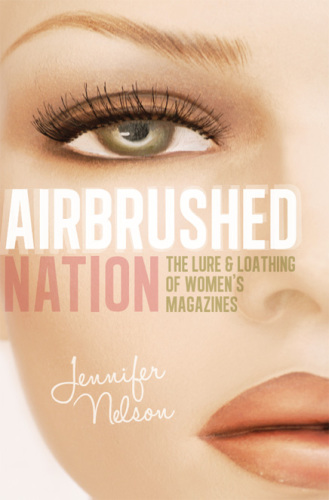
Airbrushed Nation
The Lure and Loathing of Women's Magazines
- اطلاعات
- نقد و بررسی
- دیدگاه کاربران
نقد و بررسی

September 17, 2012
In her examination of the pitfalls and positives of the industry, journalist Nelson skillfully presents a damning report on how “chick slicks” use fear, subliminal advertising, and mixed messages about female empowerment to manipulate women, but in particular young girls, setting up lifelong struggles with self-esteem and body image. This wasn’t always the case, with the earliest publications, dating back to the late 18th century, offering prose, household advice, and foreign news. But with the Depression and following WWII, content and ads shifted, presenting females as housewives and sex objects needing to hold onto their youthful looks and men. The message shouted on cover after cover has become “we need self-improvement; we’re not good enough as is, but we can be” if only women pore over the latest issue. And what could make them feel better, Nelson writes, are the beauty and diet products pushed on the glossy pages, products that not coincidentally have profits of more than $40 billion annually, highlighting the ethically challenged relationship between editors and advertisers. Of course, these publications are not devoid of valuable articles, often taking the lead in publicizing national concerns such as domestic violence, reproductive health, and breast cancer, and highlighting women who are making substantive differences in their communities. At a minimum, Nelson effectively argues, these magazines should be read with a grain of salt, and that instead of buying into a dubious bill of goods about their worth, women should be feeling the kind of outrage that results in media campaigns and lost subscriptions.

October 15, 2012
Freelance journalist Nelson presents an insider's account of the "chick slick" business, leaving no page unturned in this consideration of the focus, articles, advertising, and other editorial and business facets of women's magazines such as Cosmopolitan, Better Homes and Gardens, and Vogue, among others. At first glance, the topic may not seem to warrant a book-length treatment, but Nelson, a veteran contributor to the magazines she is examining, does a laudable job of relating these magazines' histories, as well as investigating their different target audiences, story construction, advertising strategies, and how the magazines deal with such hot-button issues as health, sexuality, and social issues. Throughout the lively text are numerous sidebars containing little-known facts, quotes from other insiders, and comments from the magazines' readers. Nelson is clearly a reader of these magazines, but makes a strong case for their need to add more substance to their "fluff." VERDICT Although the book is meaty enough for both feminist and communications scholars, it is also an eye-opening read that could be enjoyed by general fans of these magazines.--Sarah Statz Cords, The Reader's Advisor Online, Middleton, WI
Copyright 2012 Library Journal, LLC Used with permission.




دیدگاه کاربران